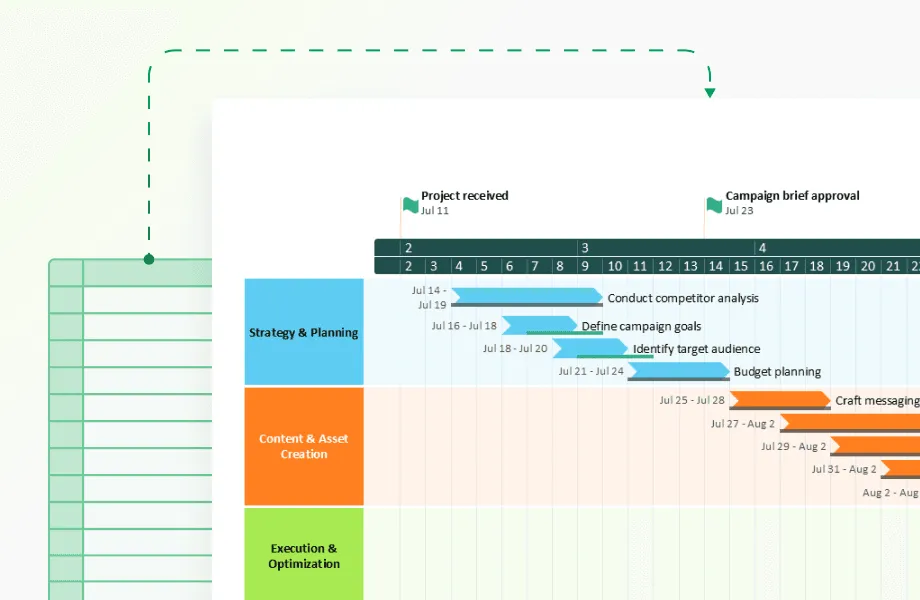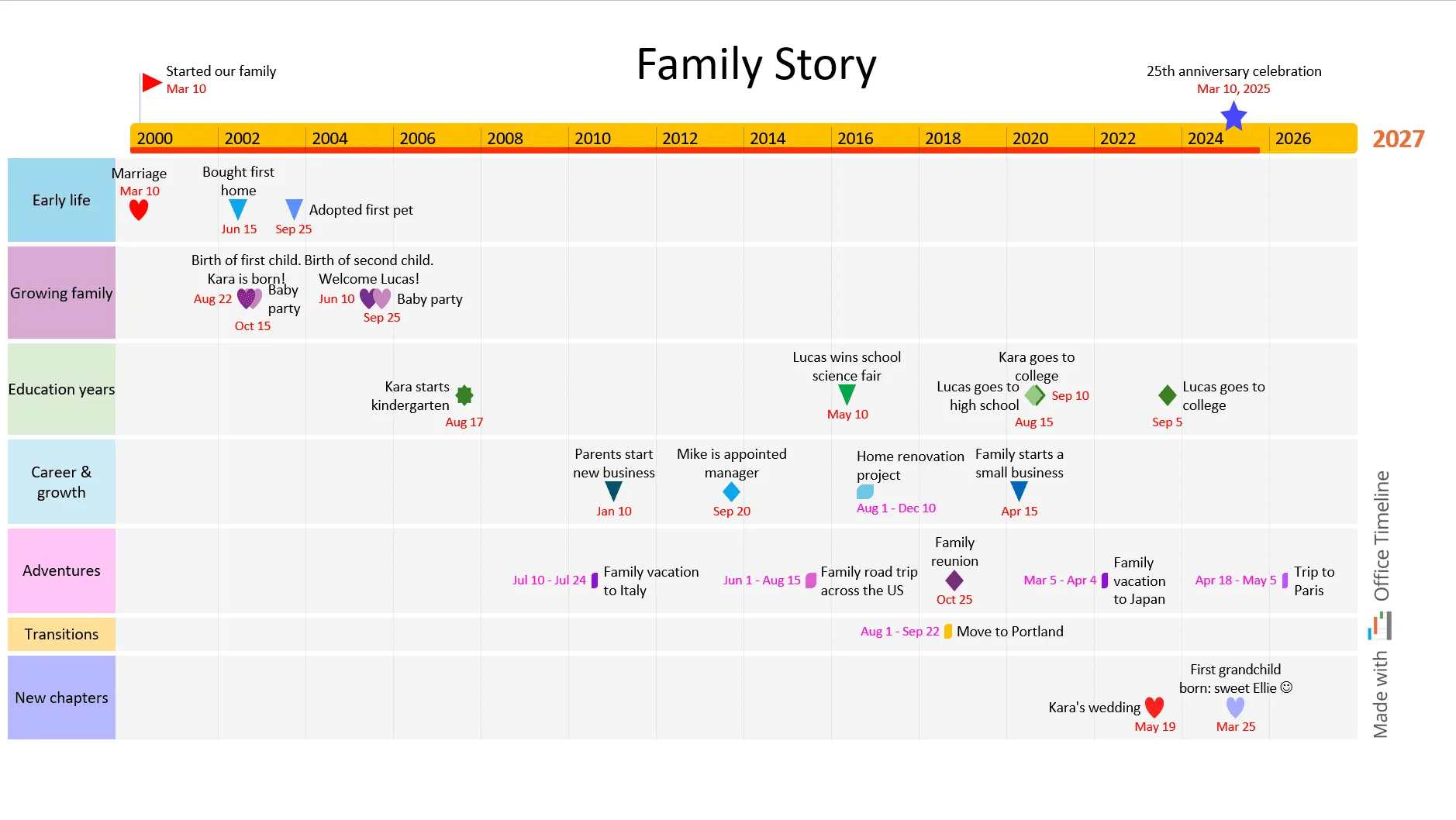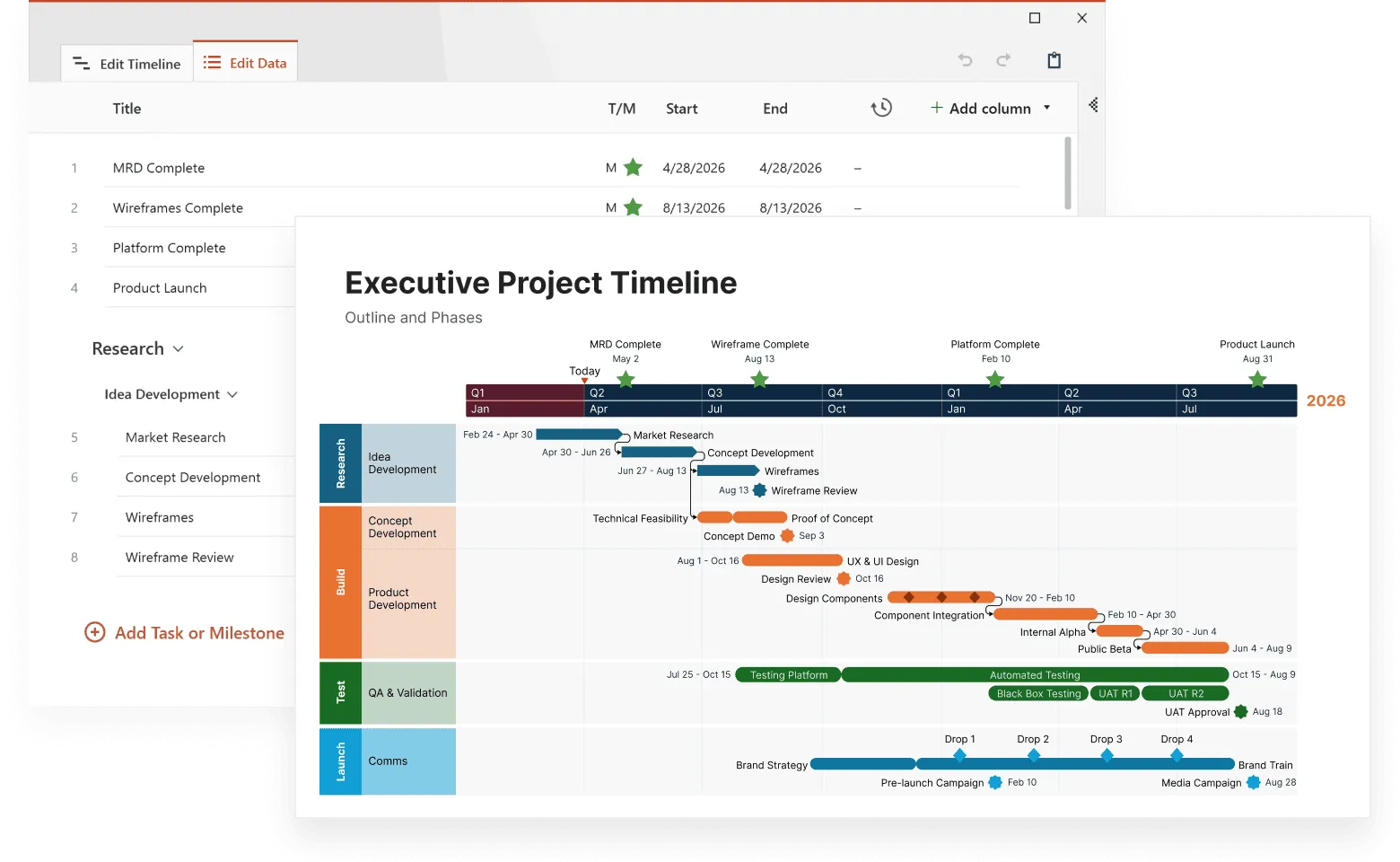A family history timeline is a tool that organizes your family's significant life events in chronological order. It helps you visualize your ancestry and uncover details about your ancestors through records and photos from their lives. In this article, we'll explore what a family history timeline is, why it's important, and how you can create one using the best tools and tips available.
A family history timeline puts your family's story in order, helping you see how generations connect and influence one another while deepening your appreciation of where you came from.
When you start building your personal timeline, you'll gather essential family information and discover historical events that shaped your ancestors’ lives, turning names and dates into real stories about real people. Using digital tools and templates can make your timeline visually engaging, easy to share, and simple to update whenever you find new information.
This guide will walk you through everything you need to create a timeline that brings your heritage to life and helps you understand your place in your family’s ongoing story.
What is a family history timeline?
A family history timeline is a visual way to see your family's story unfold over time. It's like a roadmap of when your ancestors were born, got married, had children, and experienced other important moments in their lives. If you're curious about your family roots, a timeline makes it much easier to understand and share your family's past with others. You can see at a glance how generations overlap and how your family changed over the years.
These timelines combine family stories, historical events, and personal milestones to create a rich picture of your ancestors' lives. Maybe your grandfather served in a war, or your great-grandmother immigrated during a specific historical period. A timeline connects these personal stories to the larger events happening in the world at that time.
Creating a family timeline can spark a real sense of connection to your roots. It makes understanding your family's past simple and interesting, and helps keep memories of your ancestors alive. It's also a great way to organize what you know so you can spot connections you might otherwise miss. When you share your timeline with relatives, you might be surprised by the additional stories and details they contribute. Family history becomes something everyone can enjoy together, with each person adding their own pieces to the puzzle of your shared past.
Why a family timeline matters
Building a timeline alongside your family tree helps you really understand your heritage. You can see how grandma was raising your mom while great-grandpa was still alive, or how your parents were teenagers during important historical events. The timeline shows these connections clearly, making your research feel more complete. When you lay everything out visually, you might notice gaps or find new details you hadn't spotted before.
Trying to get kids interested in family history can be tough. Timelines make it easier by showing the story in small, connected pieces that make sense. When information is presented this way, younger family members are more likely to remember and care about where they came from. Timelines help everyone see and appreciate your family's story.
Using a timeline changes how you and your relatives think about your shared past. Dates that might seem boring on their own become part of a fascinating story when put in context. Genealogy becomes something everyone can get excited about, not just the dedicated researcher in the family. As you connect people to events and to each other on your timeline, your ancestors stop being just names and become real people who lived through interesting time, their story comes alive.
Getting started with your family history timeline
Starting a family history timeline might seem like a big job at first, but with the right approach, it turns into an exciting adventure through your past. Begin with what you already know about your family - birthdays, wedding dates, and other big moments. These basics give you a starting point before you dig deeper.
Understanding major historical events helps put your family's story in context. Did your grandmother live through the Great Depression? Was your grandfather in World War II? Adding these historical moments to your timeline shows how larger events affected your family's choices and daily lives. It helps you appreciate what your ancestors went through and what they accomplished.
As you build your timeline, you'll find that family connections become clearer. By taking small steps and using helpful tools, you can create a story that's unique to your family while keeping the whole process fun and doable.
Gather basic information
To create a good family timeline, start by collecting facts you already know about your relatives. Round up birth dates, marriage dates, and important life events. These details form the backbone of your timeline.
Look for missing pieces in family records like birth certificates, old family Bibles, census records, military papers, and old photos. These sources add important facts and also give your timeline more depth and background. Once you've gathered this information and put it in order, you're ready to build a detailed timeline of your family's story.
Choose a timeline format
Picking the right layout makes a big difference in how your timeline works. A chronological timeline shows events in the order they happened, making it easy to follow your family's history from beginning to end. Event-centered timelines focus on important moments and personal stories, highlighting the most memorable parts.
Using different colors for different branches of the family can make your timeline both prettier and easier to understand. There are many types of family tree charts available, both digital and paper. Pick one that feels right for what you need and like.
Use family tree templates
Family tree templates help organize your research and keep track of everyone in your family. They give you a ready-made structure for entering and viewing information clearly. Using a template keeps your records consistent, which helps when creating an organized and accurate family timeline.
Templates are especially helpful when working with other family members since everyone can add their own knowledge and stories. Whether you're mapping out just one branch of your family or creating several connected trees, templates help you build a complete picture of your ancestry.
Tools and resources for building your timeline
Creating a family timeline means using different resources that help you research and display your findings. Online databases and genealogy software are essential for organizing your research and building your family tree. When you revisit your timeline regularly, you'll often notice new patterns and better ways to arrange your family story.
To get a complete picture of how your ancestors lived, use a mix of tools in your family history timeline. Taking advantage of digital platforms where family members can work together, along with adding photos and documents that bring the story to life, will make a big difference in your family history project.
Digital tools and platforms
Online resources like genealogy websites and digital archives make building your family timeline much easier. On many of these sites, you can click a drop-down menu in the top corner to switch between different family trees or add new names to change who's featured on your timeline. These shared tools make gathering family documents and information simpler, helping you create a complete family history.
Using both date-ordered and event-focused formats helps you see exactly when things happened while also highlighting the big moments in your family's story.
Office Timeline offers a particularly useful approach for family history projects. This PowerPoint add-in lets you create professional-looking timelines with minimal effort. You can organize family events by generation, create color-coded branches for different family lines, and easily update information as you discover new facts.
The familiar PowerPoint interface makes it accessible even for family members who aren't tech-savvy, and you can easily share the finished timeline through email or printed copies for older relatives. Office Timeline's ability to create visually appealing timelines makes it ideal for family reunions or creating heritage displays that everyone can understand at a glance.
Making your family timeline digital means everyone can easily see and enjoy it. With tools like Tiki-Toki, you can create timelines that family members can click through and explore, complete with photos, videos, and stories that bring your family history to life online. If you want to share your timeline with more people, some platforms let you put your timeline on your own website or blog, so even more people can discover your family's story.
Digital timelines add fun interaction that can spark great conversations about family history during online get-togethers. Whether you're having a video call or a virtual family reunion, these platforms make it easy to share your timeline with relatives everywhere.
Share your family story beautifully
Try Office Timeline for free. Create clear, engaging timelines that bring your family story to life.

Visual enhancements
Adding old photos, scanned letters, and newspaper clippings makes your family history come alive with rich details. These visual touches transform dates and facts into a compelling story about real people.
With these resources, you can create a colorful, detailed account of your family that will grab the attention of relatives of all ages. Instead of just names and dates, they'll see faces, handwriting, and snapshots of the times your ancestors lived through.
Adding historical context to your timeline
Putting historical events on your family timeline helps you truly understand how your ancestors lived and why they made certain choices. When you see that grandpa moved west right after a local factory closed, or that great-grandma started working during World War II, their stories make more sense.
Adding this background not only improves your family's story, it helps you appreciate what your ancestors went through and overcame. You'll gain a deeper respect for their challenges and successes when you see them in the context of their times.
Major historical events
Including big historical moments like wars and economic changes along with local happenings on your family timeline gives important perspective on your ancestors' experiences. Maybe your family moved during the Great Depression, or perhaps they changed careers after a new industry came to town. These major events often strongly influenced your family members' life paths and help explain the choices they made.
Personal milestones
Highlighting individual achievements like graduations, important jobs, and travel adventures gives you a better picture of your ancestors as real people with their own stories. These personal landmarks bring your family history to life by showing what each person accomplished and contributed to the family legacy.
Collaborating with family members
Working with relatives on your family history can bring everyone closer and create a shared mission as you explore your roots together. Getting different generations involved adds unique insights and often uncovers new stories that make your family history richer and more complete.
Using tools like Office Timeline Online makes sharing your family timeline easy - you get a special link that you can send to relatives near and far, so everyone can see and enjoy your family's story.
Encourage contributions
Getting family members to share their memories, stories, and keepsakes can uncover family information you never knew existed. When you involve younger relatives, they might discover they love learning about family history and bring fresh eyes to old stories.
Gathering input from different family members ensures your family tree tells the whole story and truly represents everyone's shared heritage. Grandma might remember details about great-grandpa that nobody else knows, while your cousin might have inherited old letters or photos that fill important gaps in your timeline.
Refining and expanding your timeline
Working on your family timeline is an ongoing project that makes your family history more detailed and meaningful over time. When you review your timeline regularly, you'll notice missing pieces in your research and can clear up any information that doesn't quite match up.
Keeping your timeline updated means it always shows the newest discoveries about your family and remains useful and interesting for everyone who sees it.
Spotting gaps in research
When you create a timeline, you might notice periods where you don't know much about your ancestors or connections between family members that aren't clear. These gaps show you exactly where to focus your research next.
Looking closely at the records and documents you already have might reveal conflicts in dates or missing information, encouraging you to dig deeper and learn more about your family's past.
Continuous updates
It's important to keep adding new information to your family timeline as you find it. When you discover a new story, photo, or document, adding it to your timeline makes your family's history more complete. Keeping your timeline fresh ensures it remains a treasure that your children, grandchildren, and other relatives will value for years to come.
Your family story: a living timeline
Creating a family history timeline lets you breathe life into your ancestors' stories and see the important events that shaped their lives. Start small, use helpful tools, and carefully build a timeline that tells your family's unique story. This not only preserves memories for future generations but helps you better understand where you come from and the heritage you're passing down.
Remember that your family timeline is never really finished. With each new photo discovered in an attic box, each story shared at a holiday dinner, or each document found in an archive, your timeline grows richer and more complete. Enjoy this ongoing process of discovery; each new finding adds another piece to your family puzzle.
Building your family timeline means gathering basic information, choosing a format that works for you, and using templates and tools that make the job easier. Add historical events alongside personal milestones to show how your ancestors' lives fit into the bigger picture of their times. Bring in other family members to contribute their memories and perspectives. And keep updating your timeline regularly so it remains a valuable connection to your roots.
Start your family timeline project today and uncover the fascinating stories that make up your family's legacy. You might be surprised by what you learn about yourself along the way.
Frequently asked questions
As you start your family history timeline project, you might have some questions about where to begin and how to make it meaningful. Here are answers to some common questions that can help guide you through the process of creating a timeline that captures your unique family story.
Creating a family history timeline helps you visualize and organize your ancestry, making it easier to understand and share your unique family story. When you see events laid out by date, patterns emerge that might not be obvious in a traditional family tree. It's a wonderful way to connect with your roots and appreciate the journey your family has taken through time.
To kick off your family history timeline, gather known birthdates, marriages, and significant life events of your relatives. Start with what you know, then expand by looking through records like census data, military documents, old family Bibles, and those dusty photo albums in the attic. Even small details can add rich context to your family's story and lead to unexpected discoveries.
You can use genealogy platforms, online archives, and family tree templates to effectively build and organize your family history timeline. Tools like Ancestry.com, FamilySearch, Office Timeline, and Tiki-Toki offer different features to help you create, visualize, and share your family's story. Choose tools that match your technical comfort level and the kind of timeline you want to create.
Get your family involved by encouraging them to share their memories, photos, and family heirlooms. Set up a shared online folder where everyone can contribute documents, or bring physical items to your next family gathering. Use collaborative digital tools that allow multiple people to add information, and consider creating both digital and physical versions of your timeline so everyone can engage with it in their preferred way.
Adding historical context to your timeline is simple: just include major events like wars, economic changes, or cultural movements alongside personal milestones like jobs, education, and travels. When you see that grandma graduated high school during the Great Depression or that your parents got married during a significant historical period, you gain a deeper understanding of the world they lived in and the choices they made.



